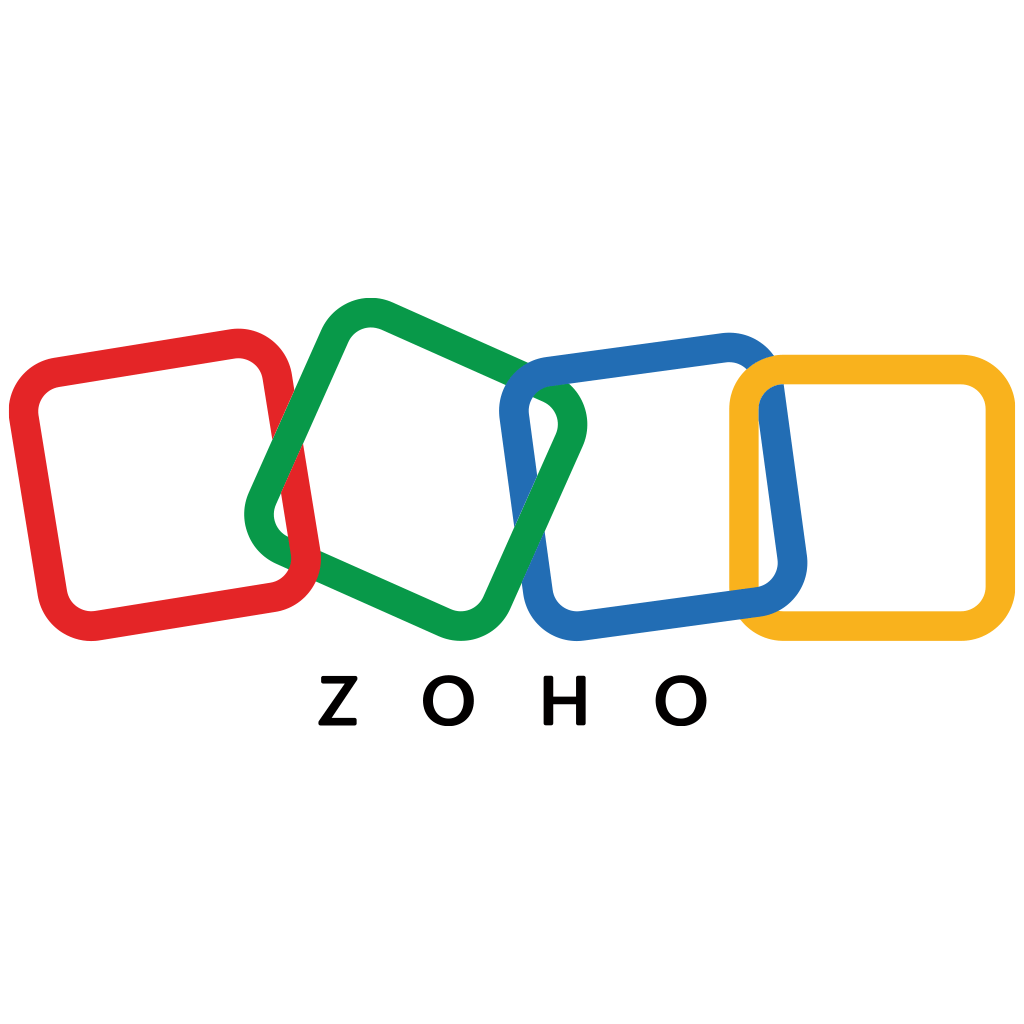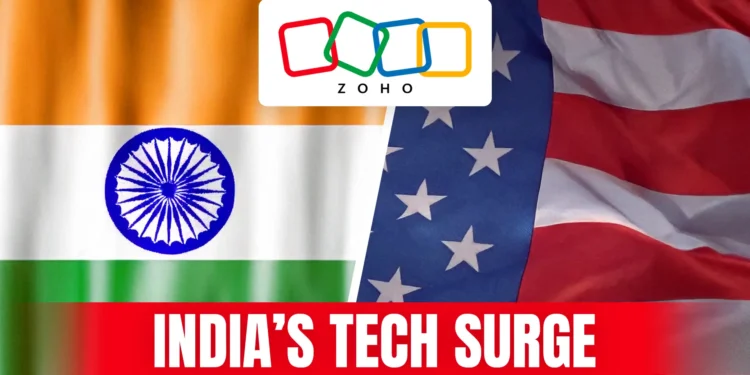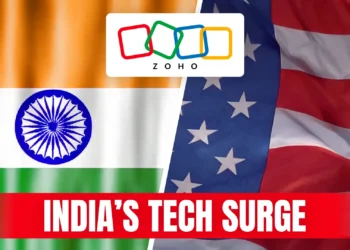Around the world, technology power has often translated into geopolitical influence. The United States has long wielded dominance in cloud infrastructure, productivity software, messaging, and enterprise tools. But now, cracks are showing. In India, a new wave of homegrown platforms—Zoho chief among them—is quietly laying the groundwork for an alternate digital ecosystem. Combine that with hostile U.S. visa policies that penalize skilled Indian talent, and you see the outlines of a shifting balance: the possibility of India replacing, or at least challenging, the established tech order.
This article traces Zoho’s ascent, places it in the context of India’s growing software capabilities, and argues how recent policy actions in the U.S. might accelerate India’s march toward soft power in global IT.
Table of Contents
India’s software story has entered a new phase—moving from renting out talent to Western giants to building sovereign, export-ready stacks. Zoho’s bootstrapped ecosystem—spanning CRM, mail, finance, analytics, and even chat—signals that shift with a privacy-first, integration-heavy approach. As visa barriers harden and CIOs prioritize total cost, data control, and compliance, Indian SaaS is graduating from “alternative” to “default” in more boardrooms. Anchored by digital public infrastructure and amplified by India’s soft power, Zoho (and peers like Arattai and Ulaa) is challenging Big Tech lock-in and sketching a multipolar map for enterprise software.
The Zoho Ecosystem: More Than “Me-Too” Ambitions
Zoho is not just another SaaS vendor. Over nearly three decades, it has built an integrated suite of applications—from CRM, finance, HR, analytics to messaging—that can collectively substitute major components of Microsoft, Google, Salesforce, and others.
Some characteristics make Zoho strategically significant:
- Fully homegrown, bootstrapped: Zoho has avoided heavy dependence on external VC funding and remains privately held, giving it flexibility to take the long view rather than chase quarterly metrics.
- Integrated “platform + apps” model: Rather than being a point solution, Zoho offers dozens of modules that work seamlessly—CRM, email, workplace, finance, etc.—which means once a business is inside the ecosystem, switching costs are high.
- Privacy, data sovereignty, “no ads” ethos: Zoho claims it never shows ads or sells user data, and emphasizes user ownership of data.
- Focus on “transnational localism”: Zoho seeks to balance a global reach with local infrastructures and talent, rather than simply pushing U.S. or EU models.
- Moves into domains long dominated by Western giants: Recently, Zoho’s messaging app Arattai surged in India. Also its browser Ulaa has claimed top spots app rankings, challenging Chrome in some metrics.
These are not incremental moves; they are signals of ambition. When governments and institutions in India begin to adopt Zoho (e.g. the education ministry directing use of Zoho Office Suite) Hindustan Times, the symbolic weight is enormous: a reversal of dependency on U.S. or European tech for core digital infrastructure.
Even Reuters notes that Indian ministers are actively promoting domestic alternatives to Microsoft, Google, WhatsApp — and cite Zoho as a key example. Reuters
If Zoho (and other Indian tech firms) succeed in capturing sufficient scale domestically and internationally, they could weaken the monopoly of U.S. and European tech powers in many verticals: enterprise software, messaging, analytics, cloud, and more.
But it is not uncontested. There are major challenges: network effects, capital intensity (especially for infrastructure), global brand trust, regulatory compliance, battling lock-in from incumbents, and more.
Nonetheless, Zoho stands as one of the few credible challengers from the Global South.
The U.S. Strikes Back: H-1B Tax, Policy Hostility, and the Talent Chokehold
If Zoho’s rise is the soft push, U.S. immigration and visa policy is an aggressive counterpunch—and arguably accelerating India’s breakaway.
In September 2025, the Trump administration announced a $100,000 one-time fee per new H-1B visa petition, up from what used to be $2,000–5,000. This is a radical escalation designed to make hiring foreign tech talent prohibitively expensive.
This matters deeply for India:
- Indian nationals receive about 71% of H-1B visas granted annually.
- Major Indian IT firms frequently deploy talent to U.S. client sites under H-1B. That model is now under enormous cost pressure.
- Indian companies are already rethinking strategies: increasing offshore delivery (doing work within India or in other countries), shifting to other visas, reducing U.S. dependency.
Business publications report that many in India’s IT industry see this as a forced pivot: rather than being “global subcontractors via U.S. clients,” they will (or must) become product companies that serve directly worldwide.
In short: the same U.S. policy meant to punish dependence on foreign tech labor may paradoxically accelerate India’s transition from service provider to product innovator and sovereign tech player.
India’s Invisible Backbone of Western Tech
For decades, Indian talent has been the invisible engine powering America’s and Europe’s digital growth. Over 30–35% of Silicon Valley’s tech workforce comprises Indian-origin professionals, and more than 70 CEOs of U.S. and European tech firms are of Indian descent — including leaders at Google (Sundar Pichai), Microsoft (Satya Nadella), Adobe (Shantanu Narayen), and IBM (Arvind Krishna). The story extends beyond corporate boardrooms: NASA’s engineering and research divisions have long relied on Indian scientists and software specialists for projects spanning AI, aerodynamics, and planetary exploration. According to NASA’s own diversity data and past interviews with Indian-origin scientists, Indian-Americans form one of the largest non-native technical communities in U.S. space research. In essence, much of the Western technological dominance has been quietly built atop Indian skill, intellect, and discipline — a fact often overlooked, but impossible to deny.
Indian Tech Capabilities: Not Just Zoho, A Wider Surge
Zoho is emblematic, but it is not alone. The following trends reinforce India’s rising role in the global tech order:
- Booming SaaS / product startups
India now hosts over 120 unicorns (as of mid-2025). Many of them are SaaS, fintech, AI, cloud, or enterprise software companies. The shift from services to product is real.
(E.g., companies like Freshworks, Postman, Zoho itself, Chargebee, CleverTap, etc.) - AI / GenAI / ML capabilities
Indian researchers, engineers, and startups are active in LLMs, generative AI, and domain-specific AI verticals (healthcare, agritech, fintech). The global AI talent pool is increasingly Indian, or globally distributed with Indian leadership. - Open source and infrastructure leadership
Indian engineers contribute to Linux, Kubernetes, Apache projects, and tools like Apache Kafka, Apache Pulsar, etc. The infrastructure layer is less “owned” by U.S. giants than the application layer. - Digital public goods & government platforms
India’s own digital architecture—Aadhaar, UPI, India Stack, CoWIN, the digital public infrastructure (DPI)—has become a model cited by other developing countries. This establishes soft power: many nations studying or adopting parts of India’s digital architecture. - Reverse brain drain and diaspora return
As opportunities grow at home, talented diaspora and returning technologists are fueling India’s capacity. This is strengthened further now that U.S. visa policies are less friendly. - Regional leadership in Africa, Asia, Middle East
Indian firms are increasingly venturing into Africa, Southeast Asia, and the Middle East—not just as outsourcers, but as providers of core technology.
Thus, Zoho’s growth is not an isolated miracle; it rides a broader wave of Indian tech maturity.
A “Slap” on the West — Or a Redefinition?
To portray Zoho and India’s ambition as a simple “slap” on the face of the U.S. or Europe is rhetorically satisfying, but somewhat misleading. It’s not about one country humiliating another. Rather, it is about rewriting the rules of the game.
- The U.S./EU model of dominant proprietary platforms, cloud ecosystems, and global lock-in is weakening.
- Rising digital sovereignty, data localization, and sovereignty concerns are leading many countries to re-evaluate dependence on Western tech.
- India’s tech ascent is extending not via coercion but via competition: better tailored, locally trusted, cost-competitive alternatives.
When nations adopt Zoho (or other Indian tech) over U.S. incumbents, it is a shift in allegiance. It’s less about revenge, more about carving out a new multipolar technology architecture.
Still, the timing is poetic: the U.S. visa crackdown and tariff pressures (e.g. 50% tariff on Indian goods) Reuters are pushing India to accelerate its push for autonomy and self-reliance in tech. A once-asymmetrical dependency is now being turned on its head.
Risks, Hurdles & The Path Forward
It would be naive to assume this shift is guaranteed. Some of the challenges:
- Scale & capital for infrastructure: Cloud, data centers, networking are capital intensive. Competing with AWS, Azure, Google Cloud is hugely costly.
- Global trust, regulation, governance: Many enterprises worry about compliance, audits, security, and regulatory risk when adopting newer providers.
- Switching costs & legacy lock-in: Many firms are deeply embedded in Microsoft 365, AWS, Salesforce, Google Workspace etc.
- Innovation pace: The incumbents have armies of engineers, vast R&D budgets, and decades of product maturity.
- Geopolitics & pressure: The U.S. and EU may respond with regulation, sanctions, trade barriers, or digital policy restrictions to thwart challengers.
To succeed, India must:
- Double down on R&D, public infrastructure, and grant funding for deep tech.
- Cultivate global go-to-market, marketing, and brand legitimacy.
- Build robust regulation, security audits, and certifications to win enterprise trust.
- Support startups to scale (incubators, funding, incentives).
- Leverage India’s digital public infrastructure as an exportable reference model.
Conclusion: The Quiet Turning of the Tech Order
We live in a time when the tectonic plates of global tech supremacy are slowly shifting. Zoho may not immediately unseat Microsoft or Google everywhere—but it represents a credible front in India’s attempt to reclaim sovereignty in the realm of software. And when you pair that with U.S. policy moves that penalize expert Indian talent, the galvanizing effect is stronger.
India is no longer just a farm for outsourcing labor for Western tech. It is becoming an engine of innovation, architecture, and digital sovereignty. The old world of unchallenged U.S. tech hegemony is fraying—and whether it is Zoho, AI startups, government platforms, or diaspora talent, India is positioning itself to occupy the center.
If the next decade goes right, we might look back and say: that was when the world order in IT started shifting. The slap was only the beginning.














